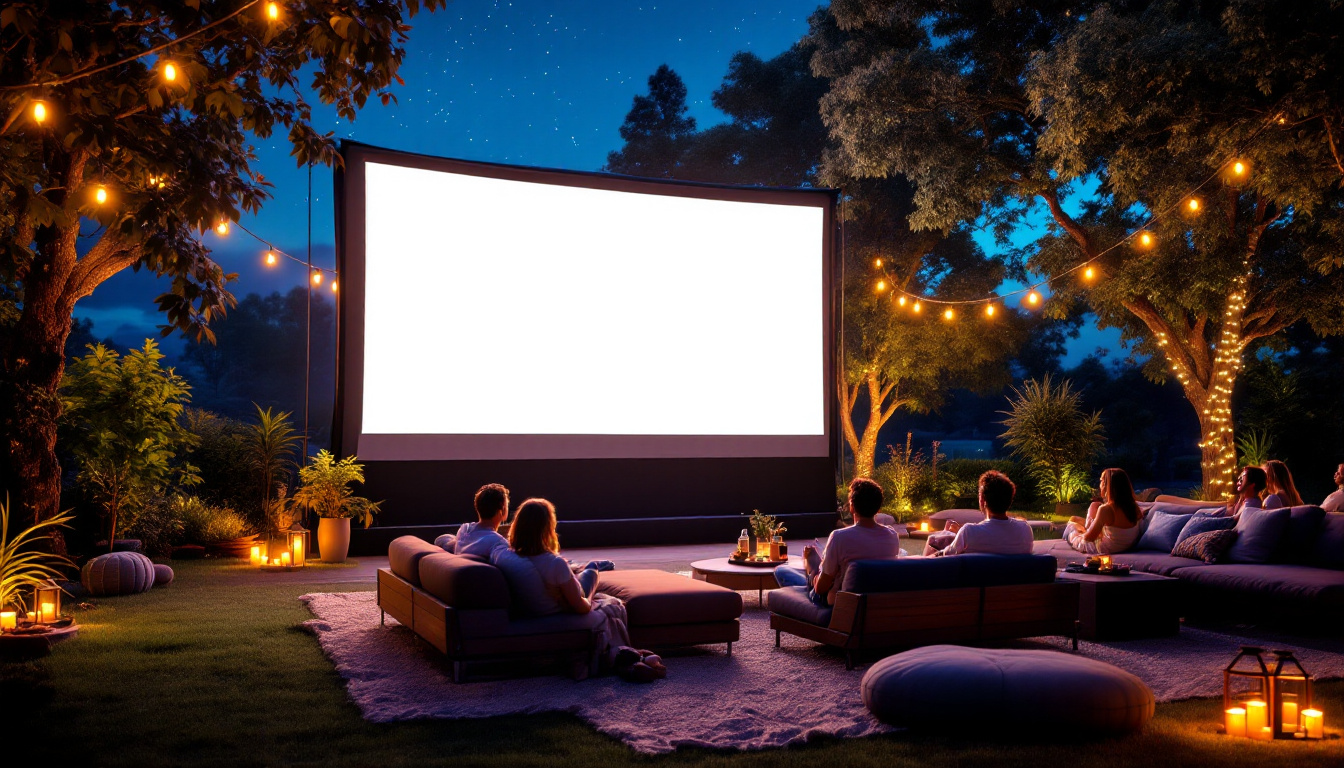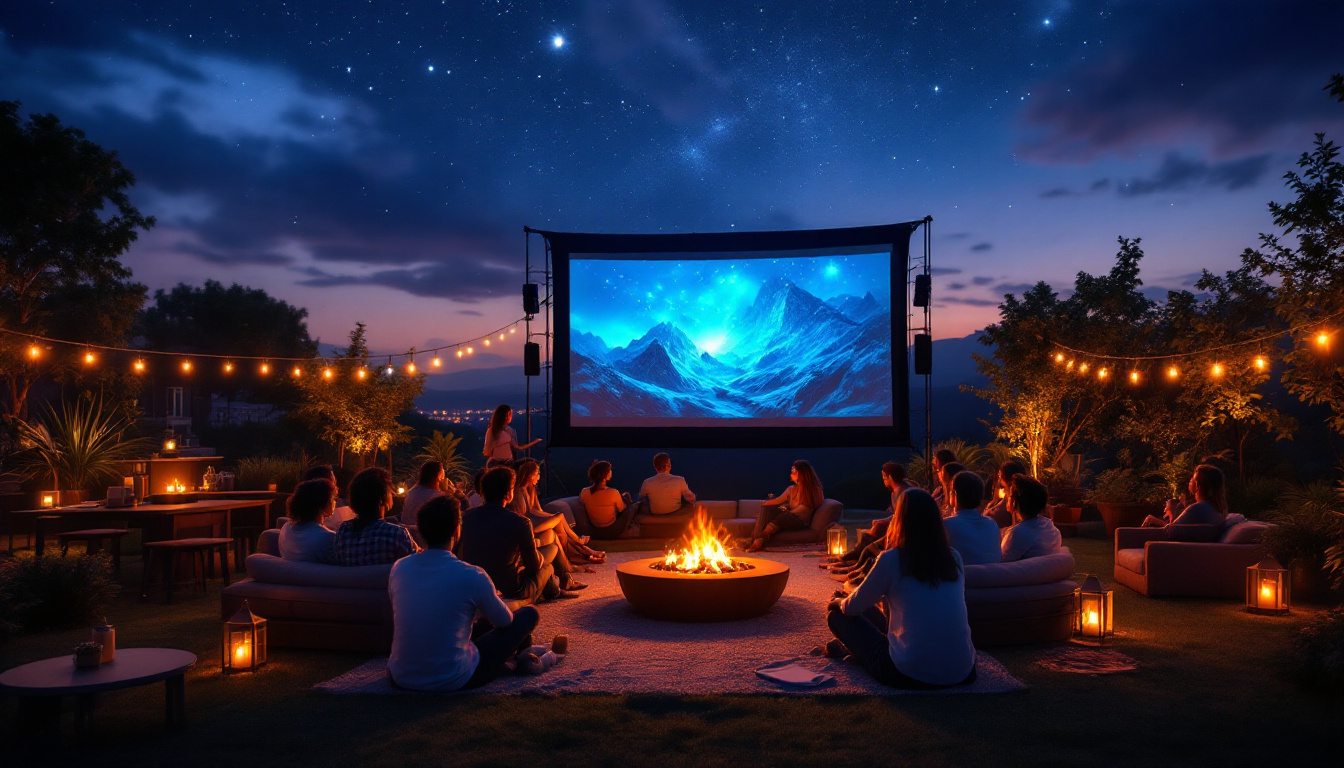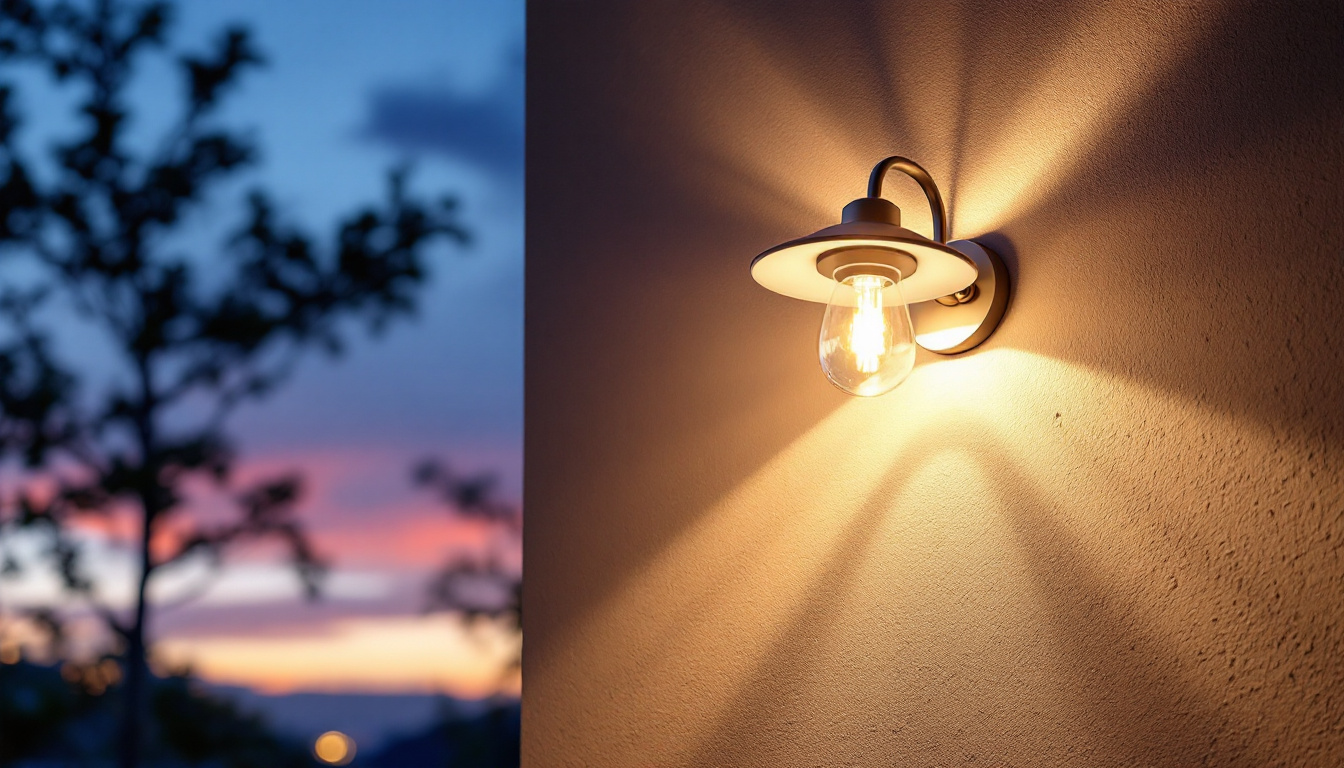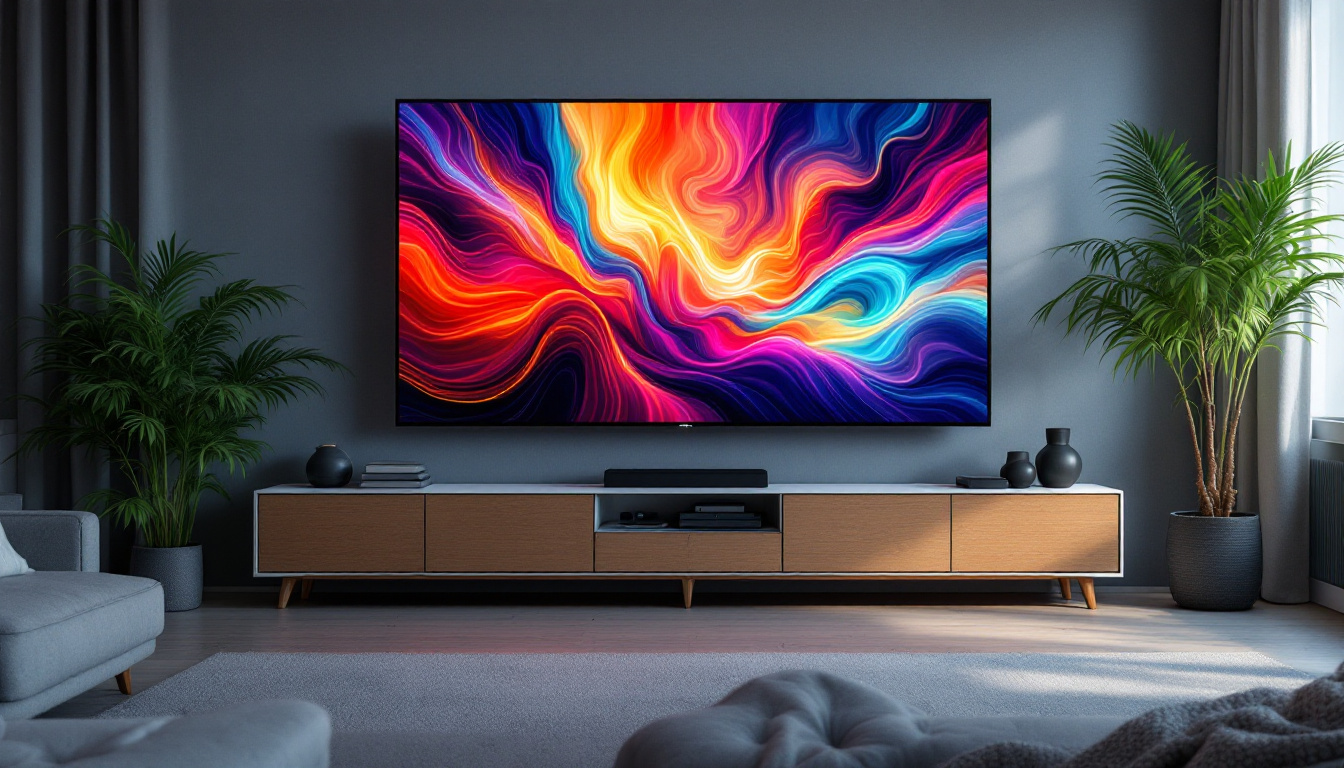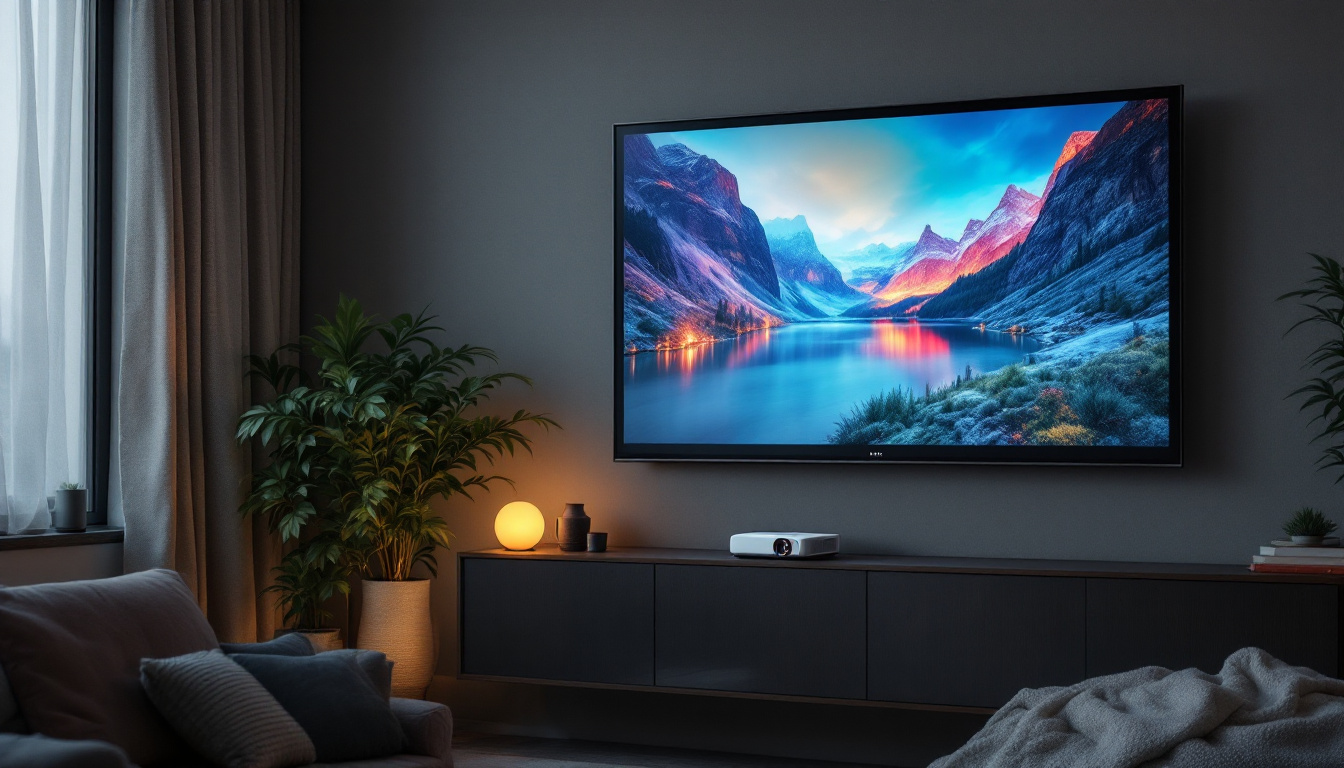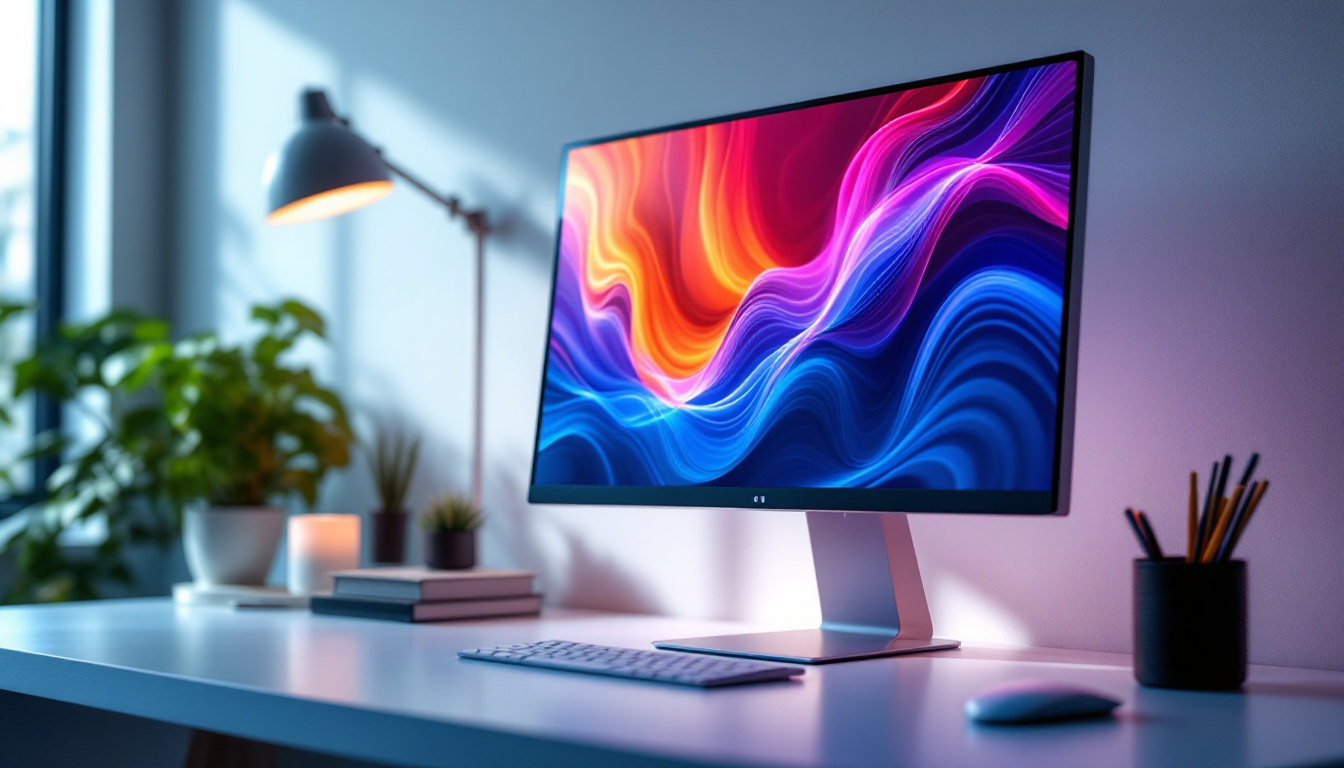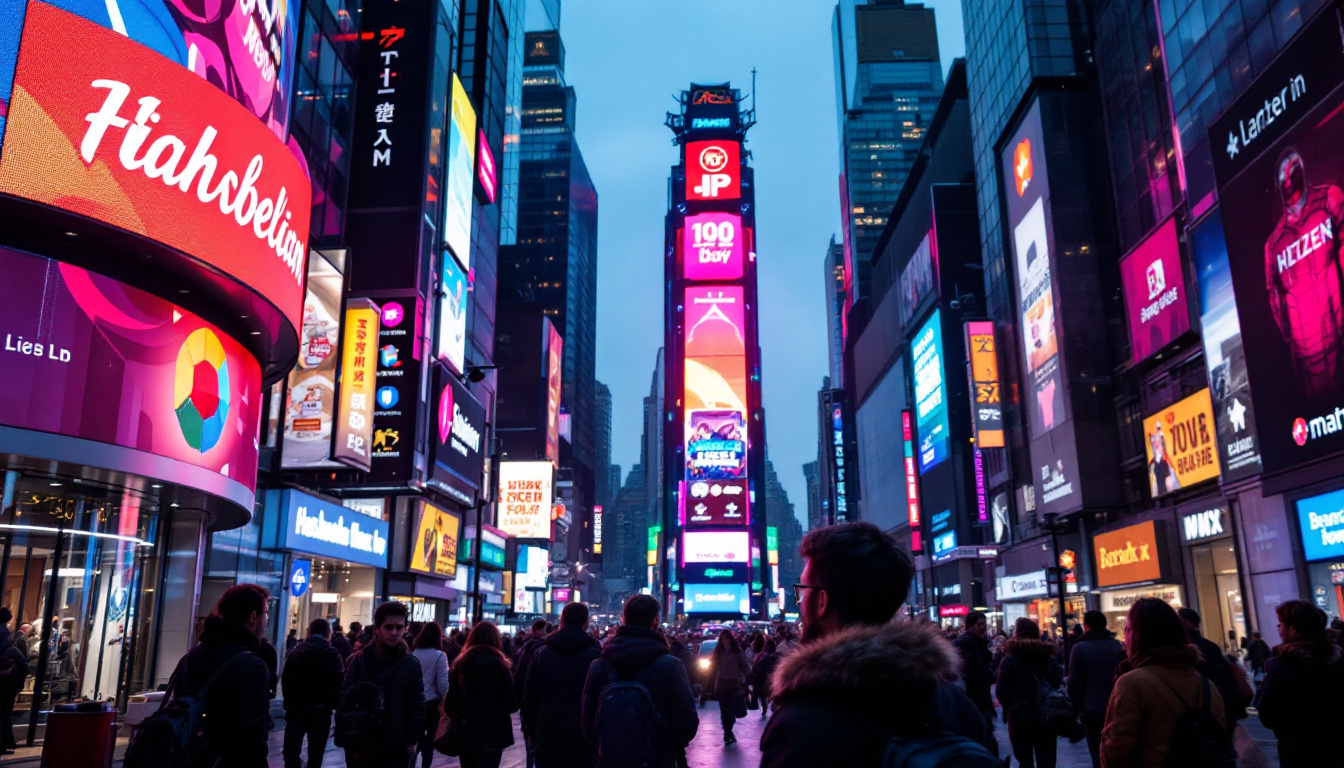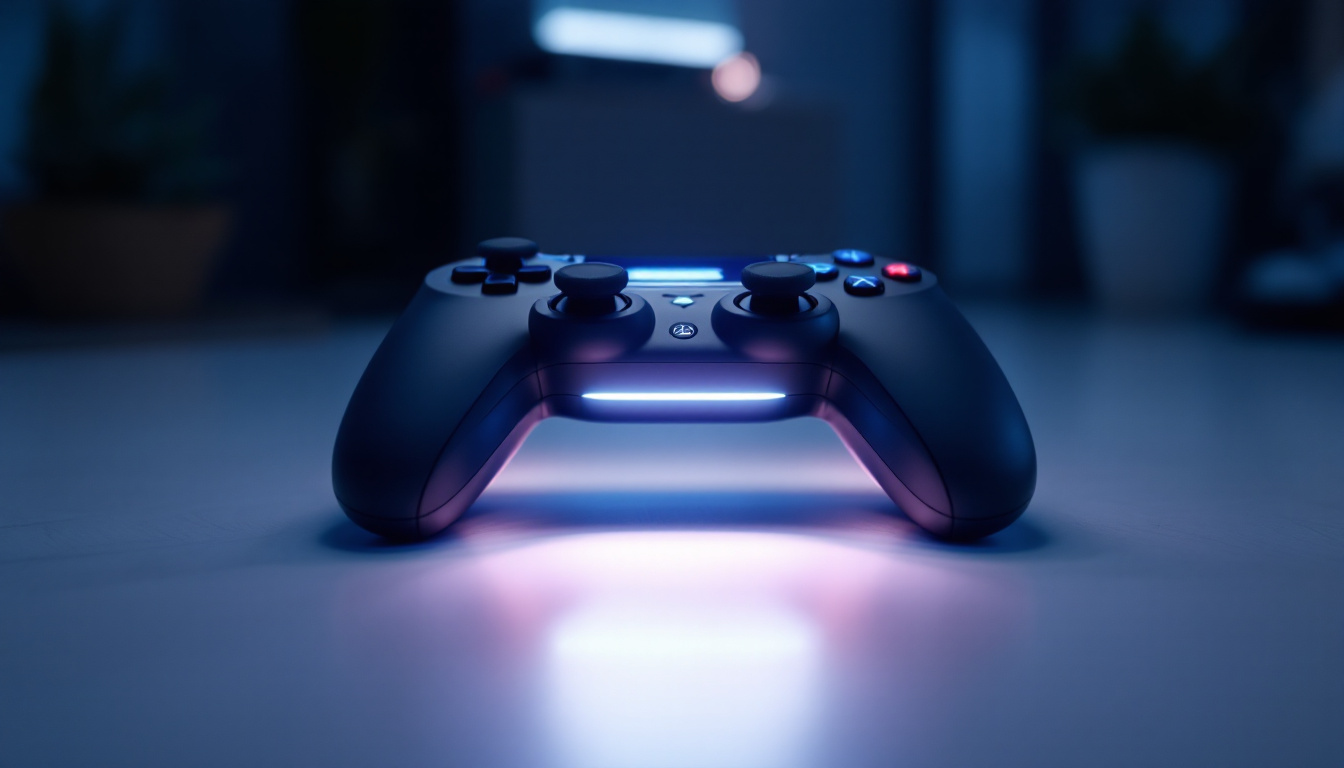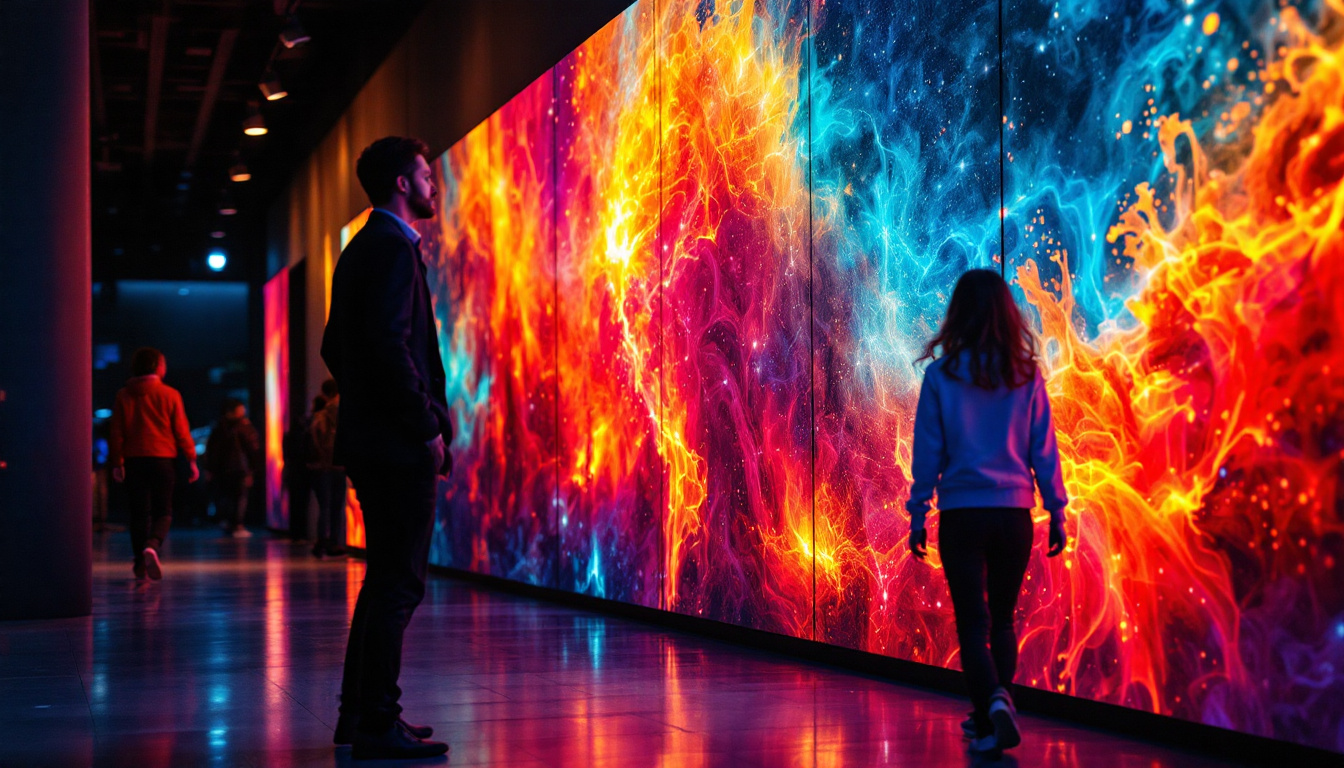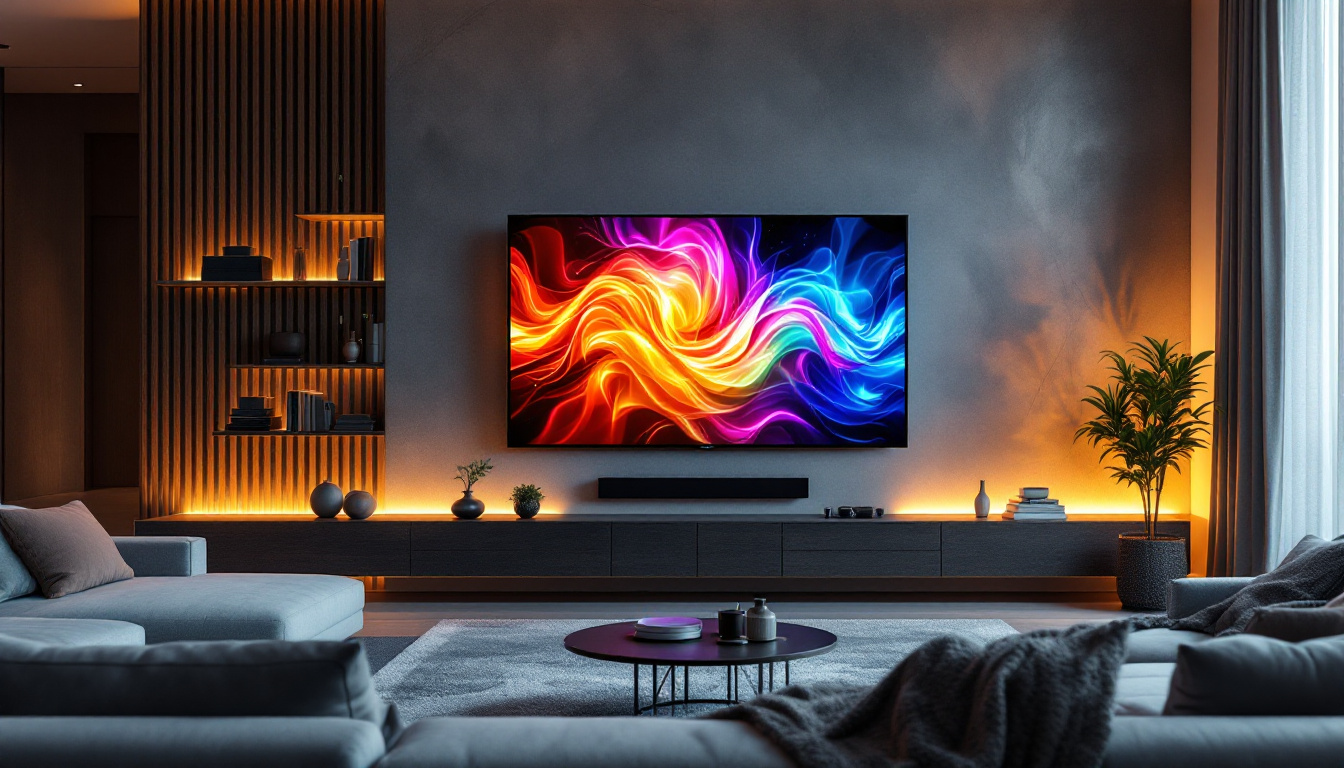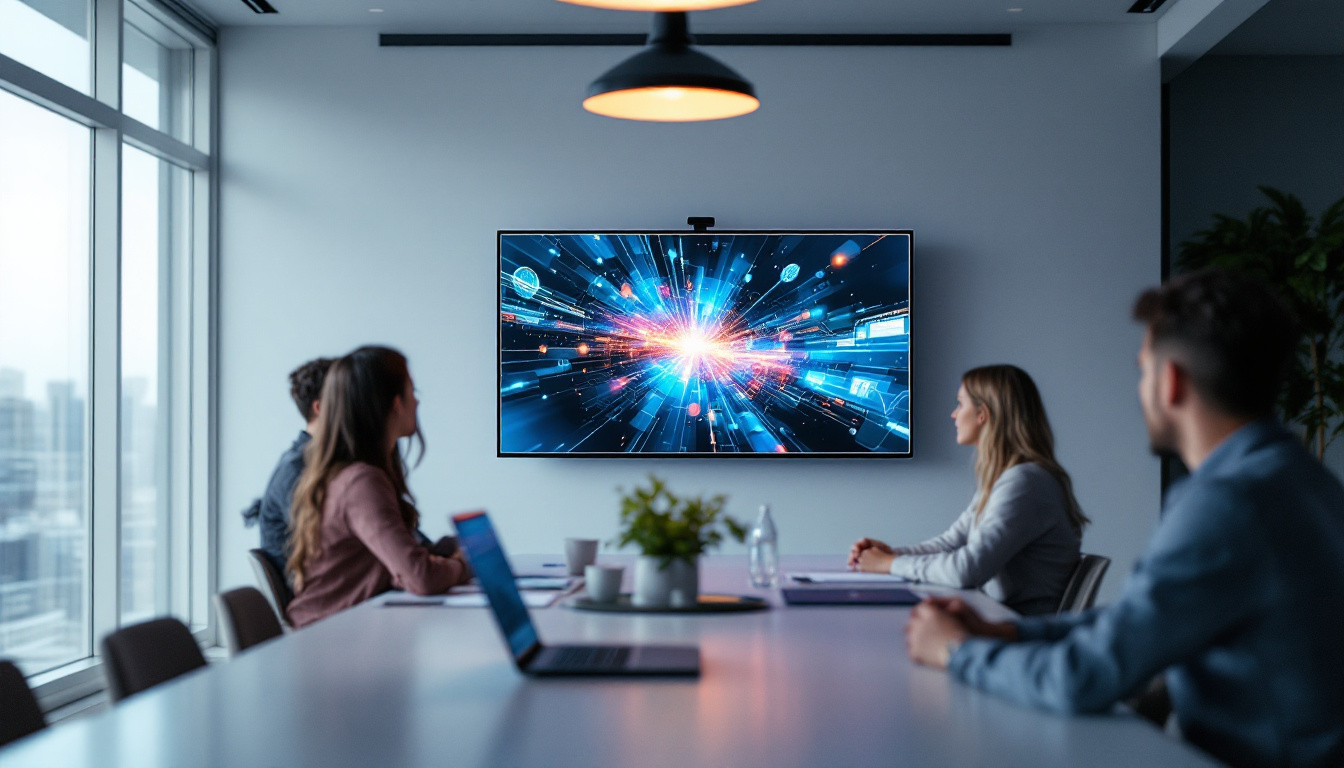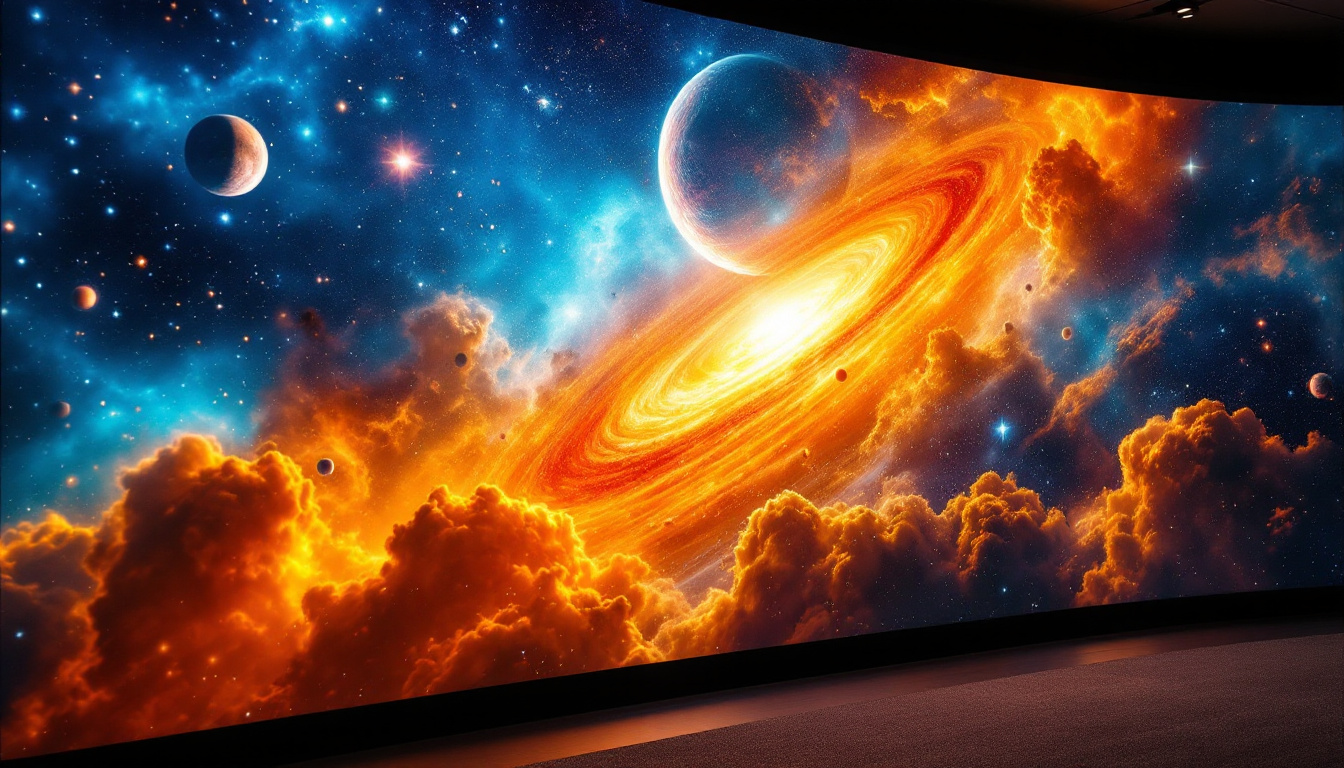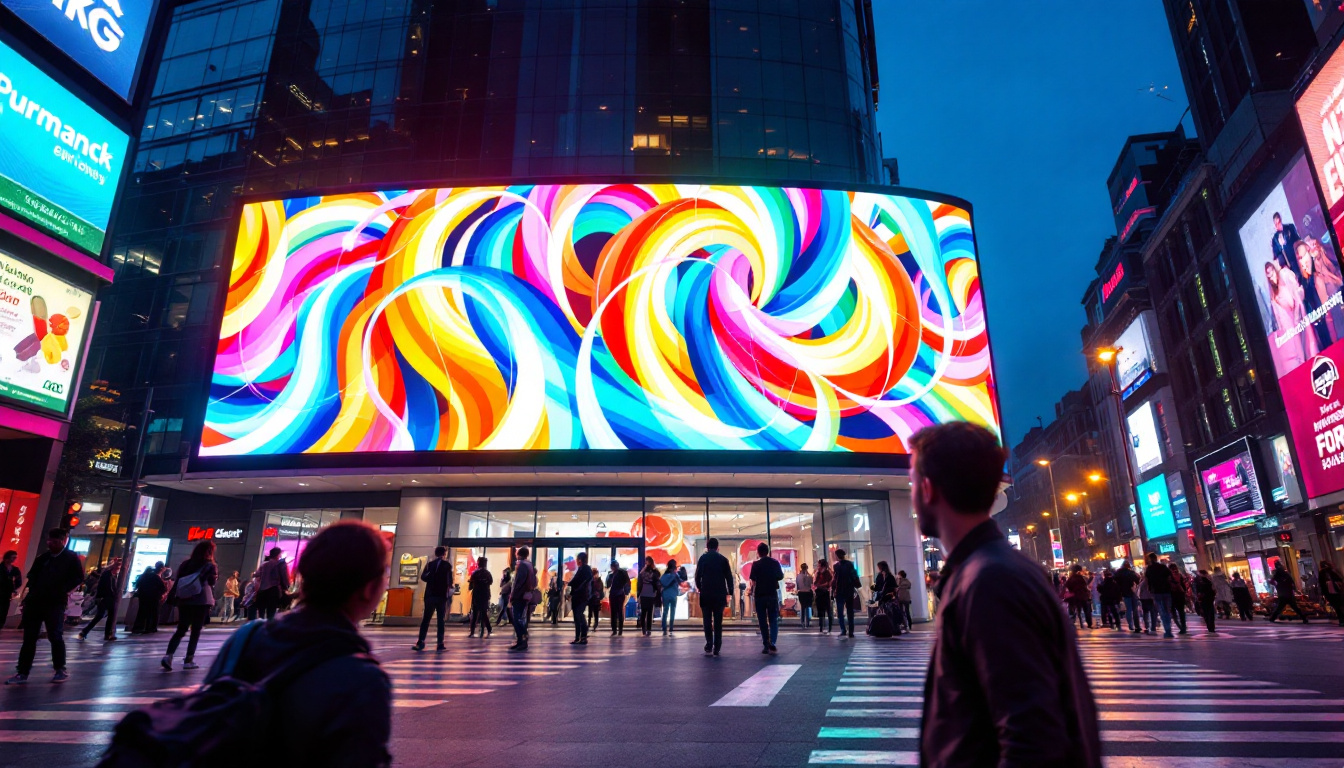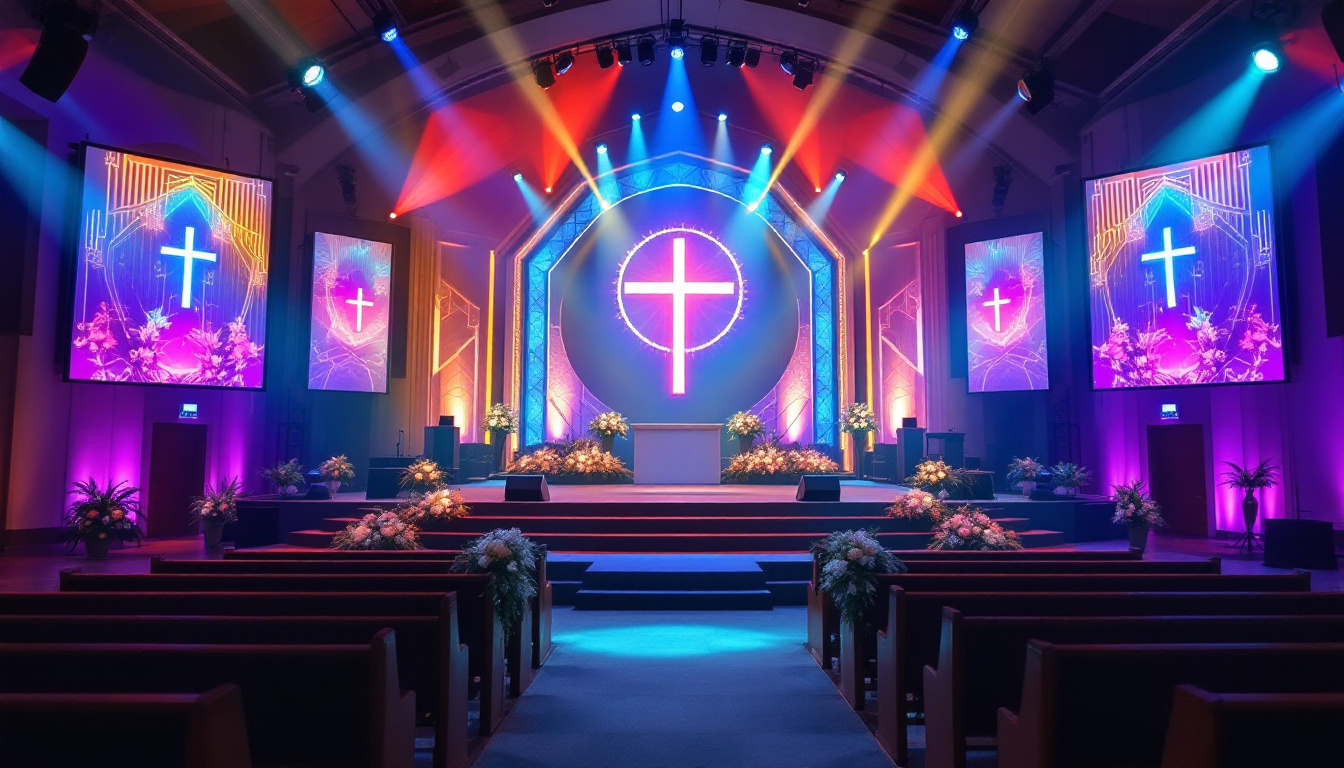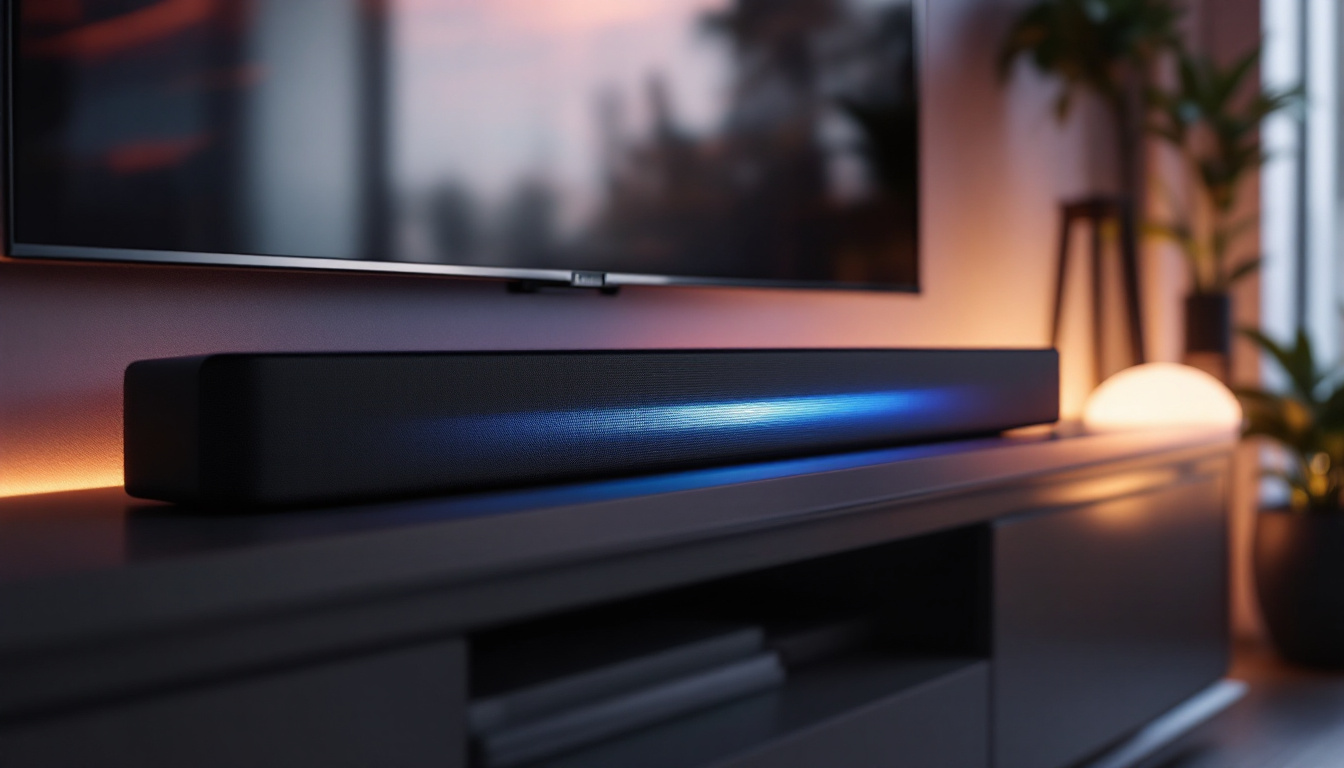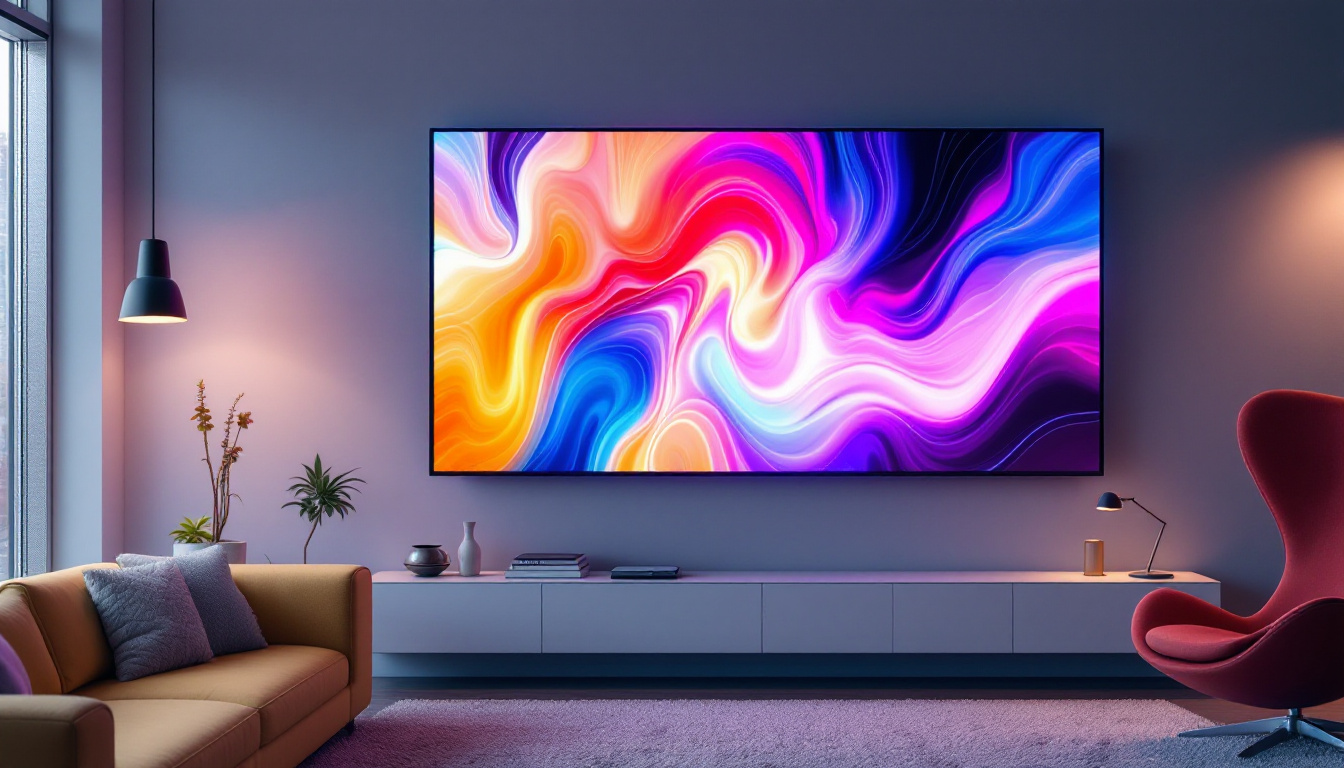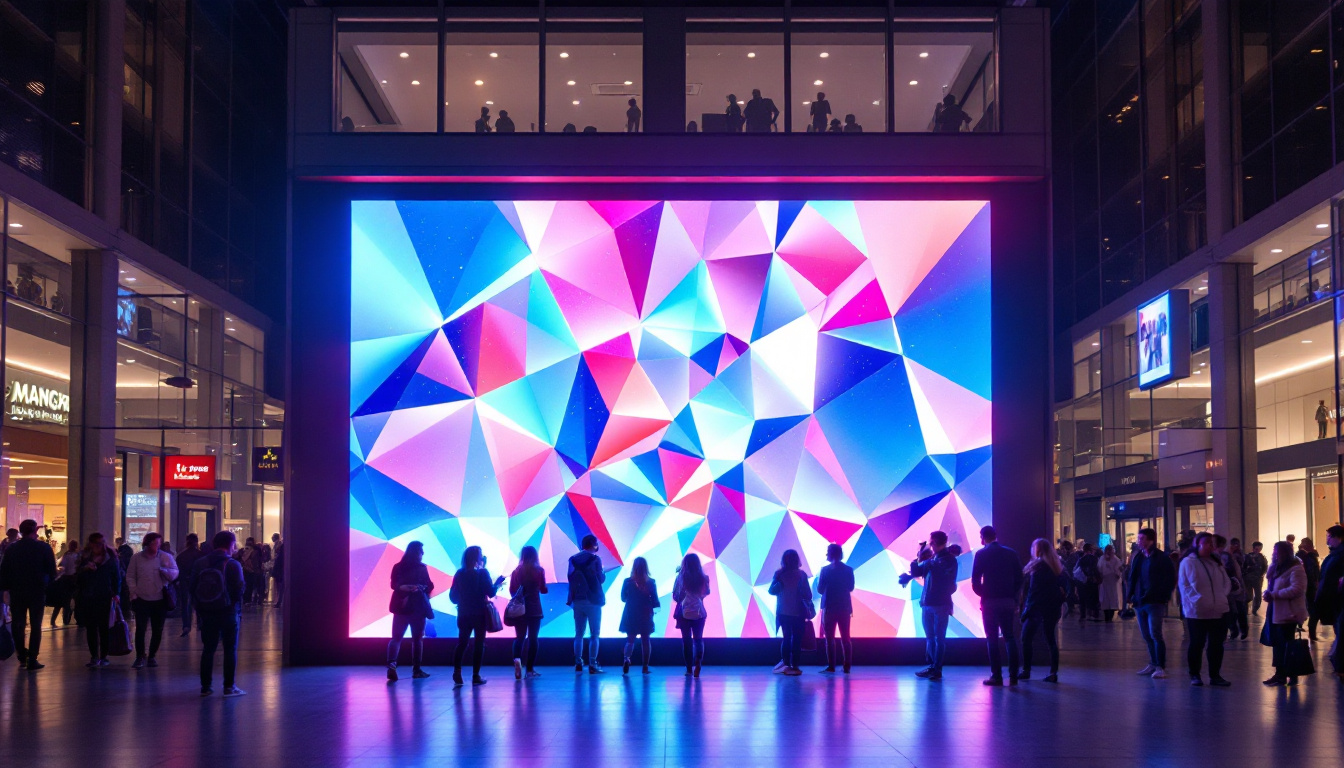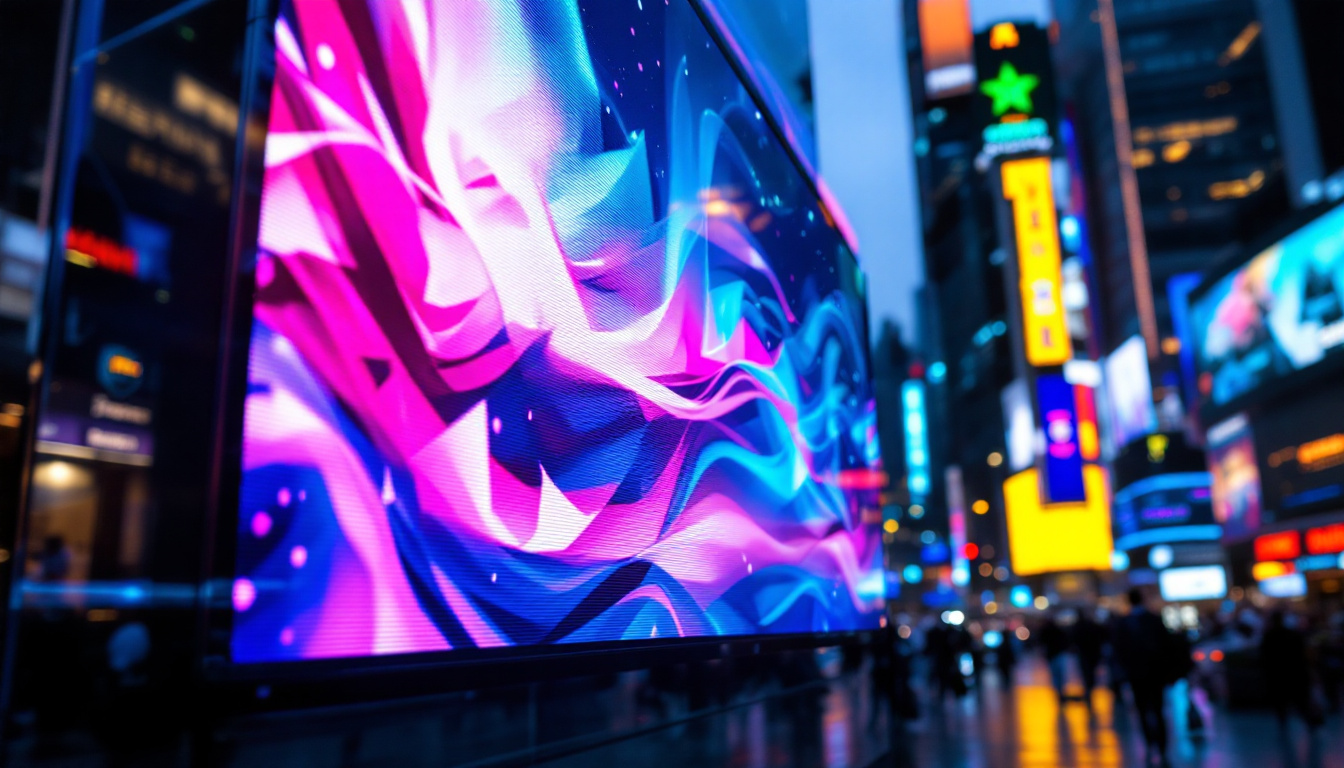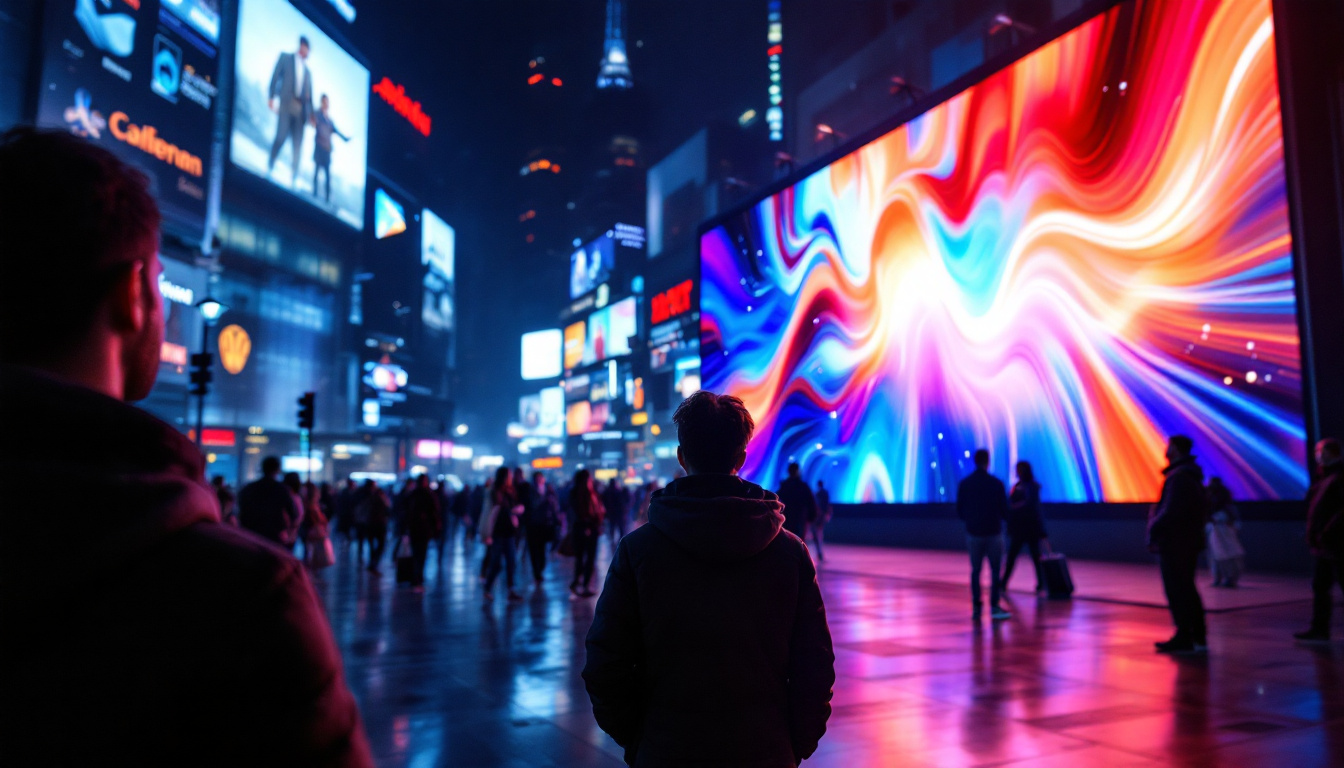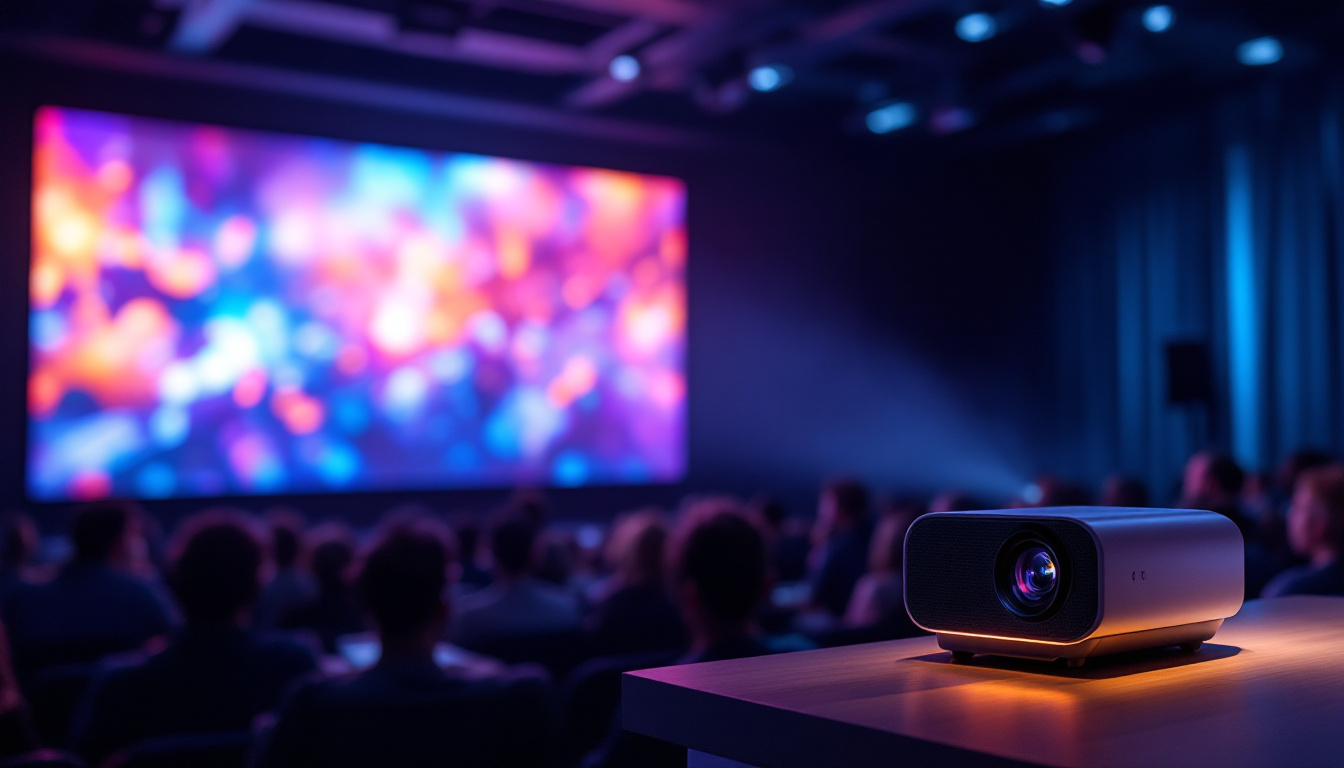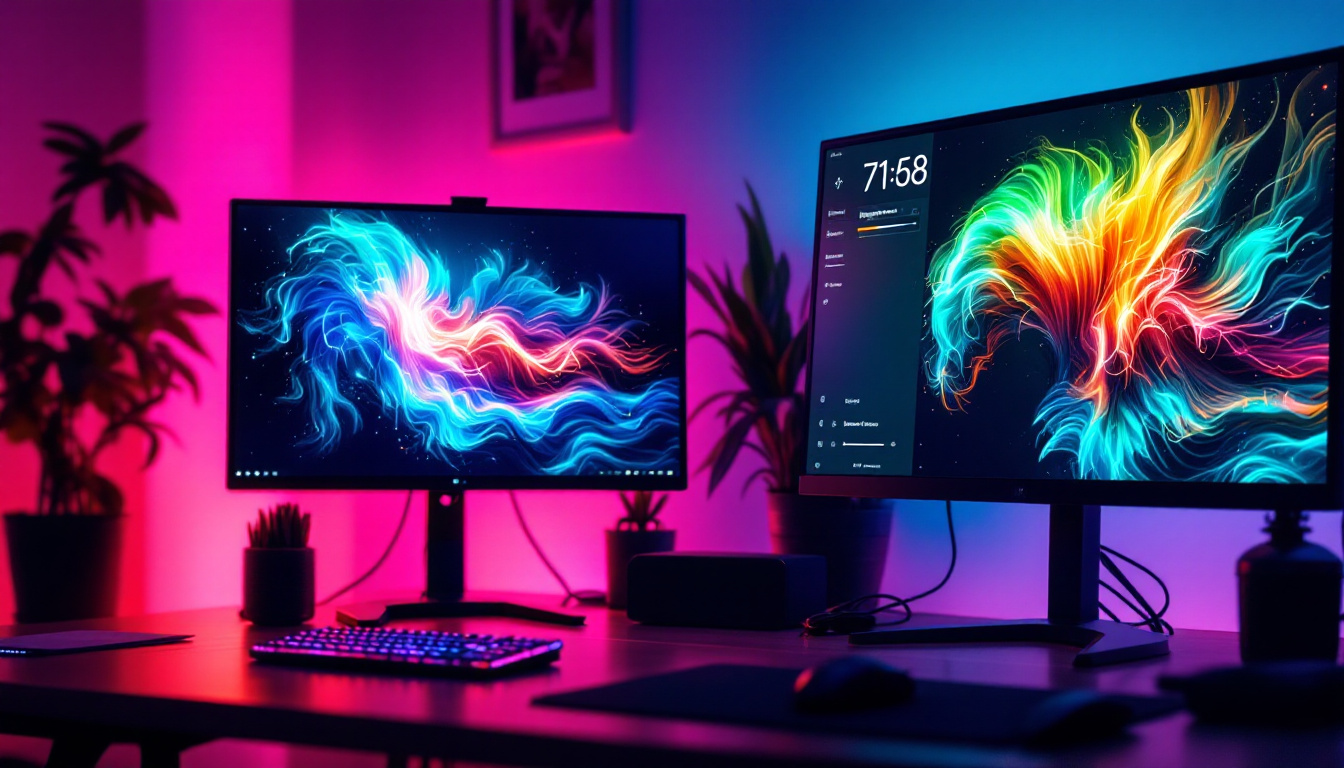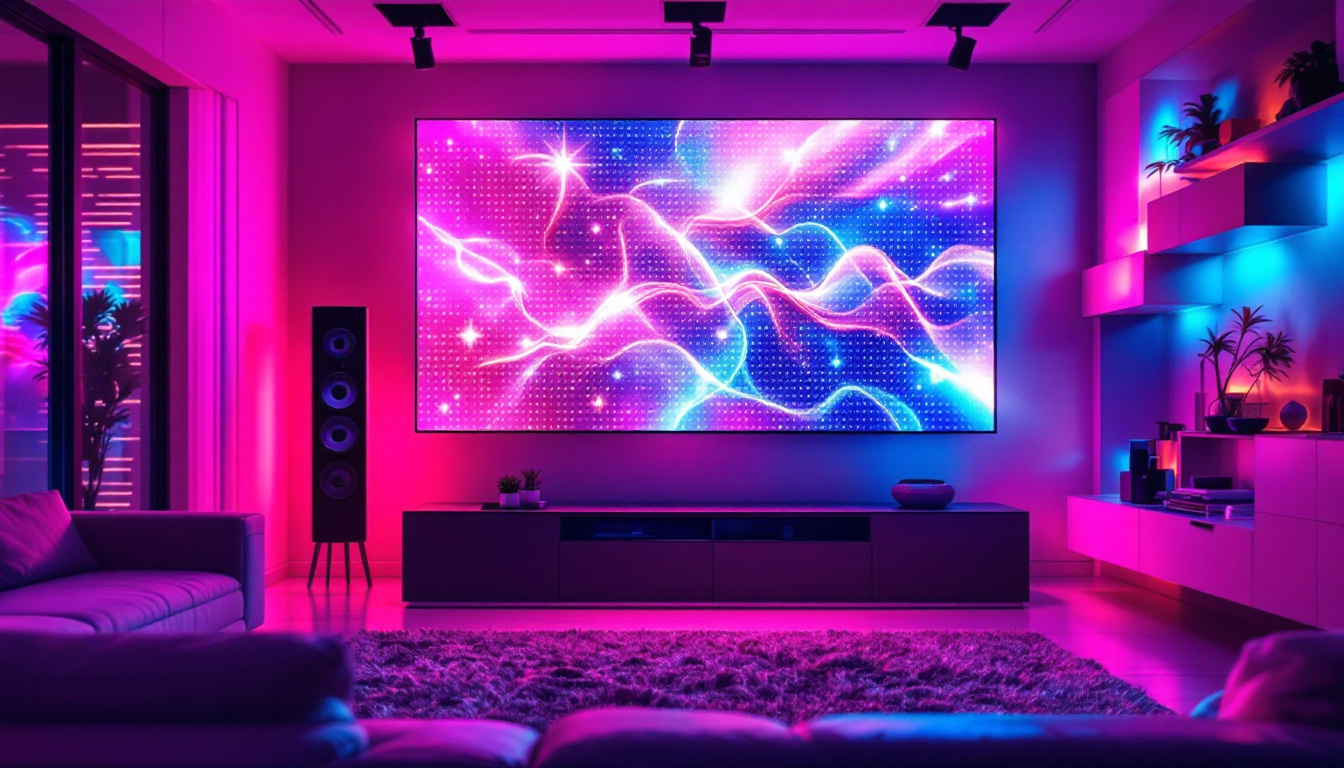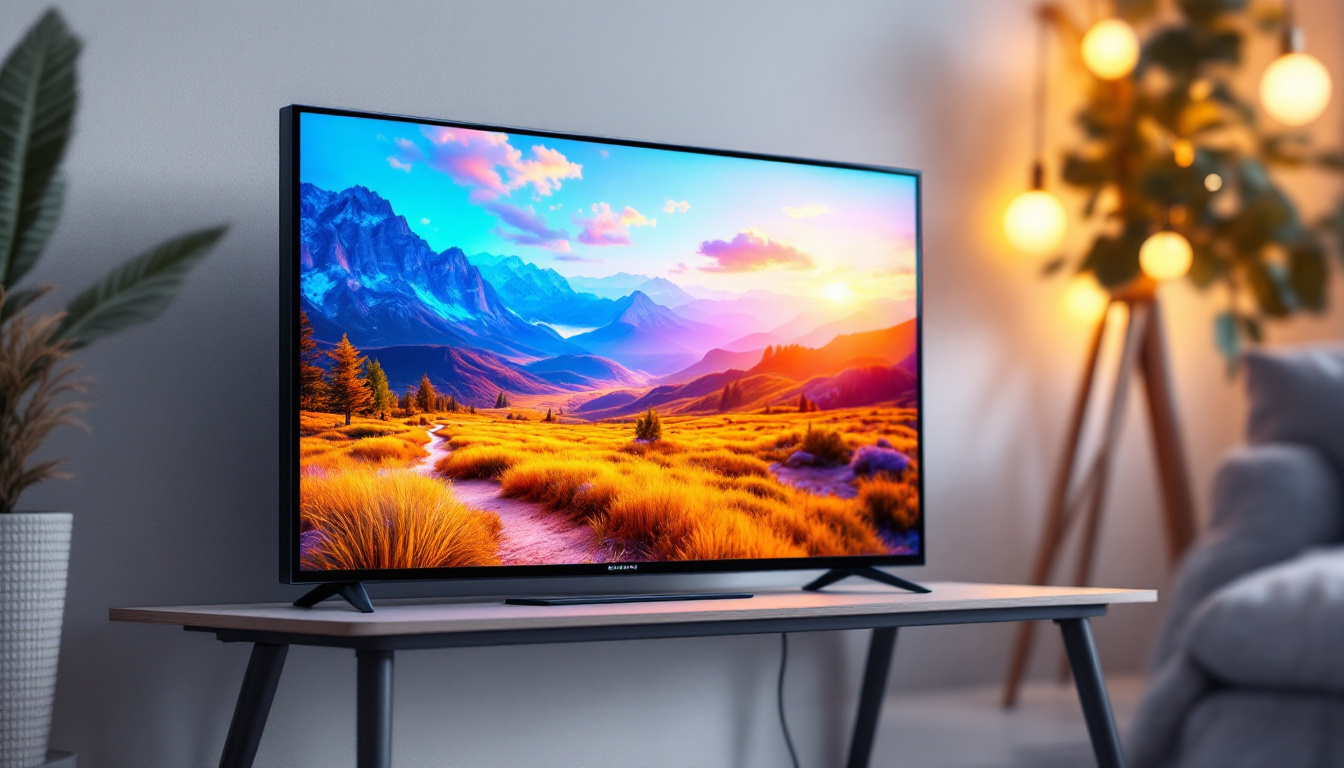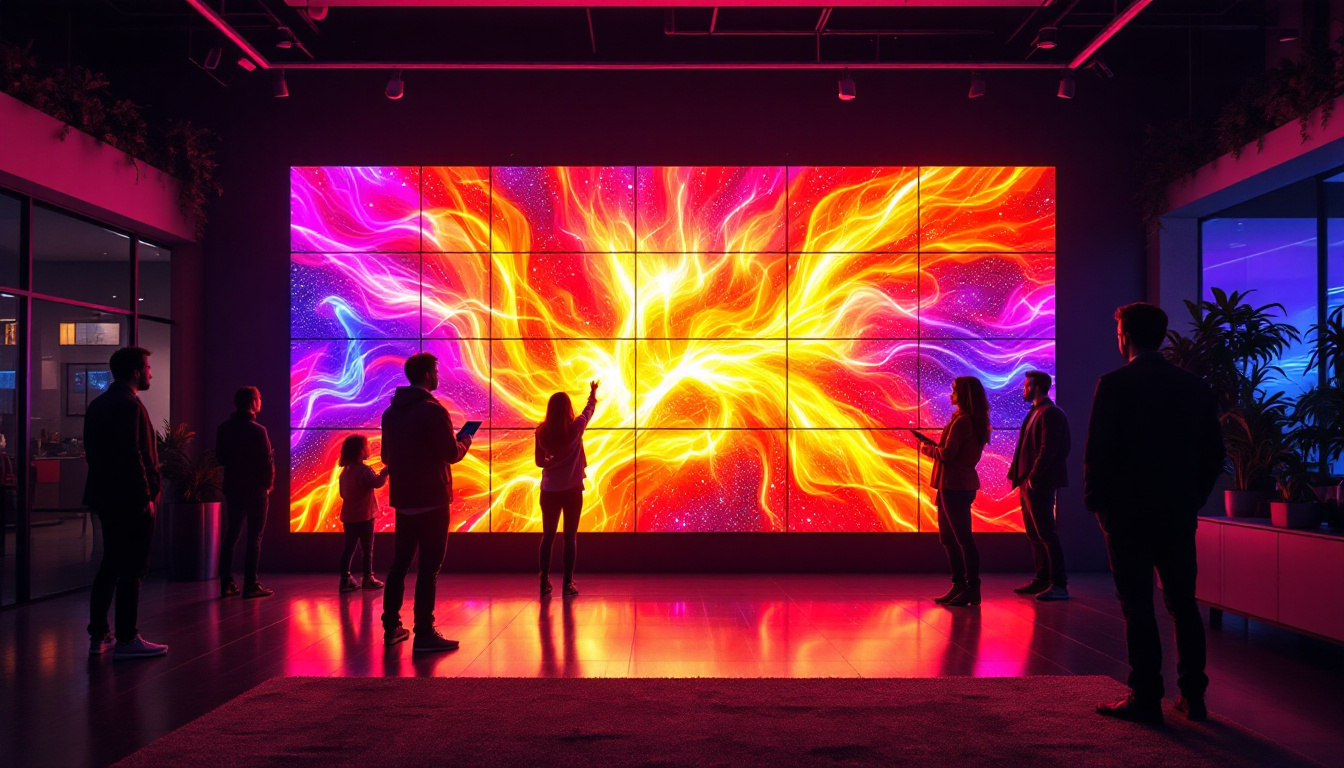As outdoor entertainment becomes increasingly popular, the demand for high-quality projection systems has surged. Whether for movie nights, sports events, or backyard gatherings, a projector paired with an outdoor screen can transform any space into a captivating viewing experience. This article delves into the intricacies of projectors designed for outdoor screens, with a particular focus on LED display technology.
Understanding Projectors
Projectors are devices that project images or videos onto a surface, typically a screen. They come in various types, each suited for different environments and purposes. When it comes to outdoor use, certain features are essential to ensure a clear and enjoyable viewing experience.
Types of Projectors
There are several types of projectors available on the market, including LCD, DLP, and LED projectors. Each type has its own advantages and disadvantages, particularly when used outdoors.
LCD projectors utilize liquid crystal displays to produce images. They are known for their bright colors and sharp images, making them suitable for outdoor settings. DLP projectors, on the other hand, use a digital light processing chip and are renowned for their high contrast ratios and smooth video playback. However, LED projectors are gaining popularity due to their energy efficiency, longevity, and compact size. These projectors often have built-in batteries, allowing for true portability, which is a significant advantage for outdoor events where power sources may be limited.
Key Features for Outdoor Projectors
When selecting a projector for outdoor use, several key features should be considered:
- Brightness: Measured in lumens, brightness is crucial for outdoor projectors. A higher lumen count ensures that images remain visible even in ambient light.
- Resolution: Higher resolution projectors provide clearer images. For outdoor viewing, a minimum of 1080p is recommended.
- Portability: Outdoor projectors should be lightweight and easy to transport, allowing for quick setup and takedown.
In addition to these features, it’s also important to consider the projector’s connectivity options. Many modern projectors come equipped with Wi-Fi and Bluetooth capabilities, enabling seamless streaming from various devices such as smartphones, tablets, or laptops. This flexibility allows users to easily share content without the hassle of cumbersome cables, making it ideal for spontaneous outdoor movie nights or presentations. Furthermore, look for projectors that offer built-in speakers or the option to connect to external audio systems, as sound quality can significantly enhance the viewing experience, especially in open spaces where ambient noise may be a factor.
Another crucial aspect to consider is the projector’s durability and weather resistance. Outdoor conditions can be unpredictable, so choosing a projector that is designed to withstand elements like moisture and dust can prolong its lifespan and ensure reliable performance. Some projectors come with protective casings or are specifically designed for outdoor use, featuring rugged designs that can handle the rigors of outdoor environments. This attention to durability not only protects your investment but also allows for more versatile usage, whether for backyard movie nights, camping trips, or outdoor presentations.
LED Projectors: The Future of Outdoor Viewing
LED projectors have revolutionized the way outdoor events are experienced. They offer numerous advantages over traditional projection technologies, making them a preferred choice for many outdoor enthusiasts.
Advantages of LED Technology
One of the most significant benefits of LED projectors is their energy efficiency. They consume less power compared to other types, which is particularly advantageous for extended outdoor events where power sources may be limited. This efficiency not only helps in reducing electricity costs but also contributes to a more sustainable approach to outdoor entertainment, aligning with the growing trend of eco-conscious consumerism.
Additionally, LED projectors boast a longer lifespan. While traditional bulbs may need replacement after a few thousand hours, LED lights can last up to 30,000 hours or more, reducing maintenance costs and downtime. This longevity makes them a smart investment for both casual users and professional event organizers, who can rely on them for multiple seasons without the hassle of frequent replacements.
Image Quality and Performance
LED projectors are known for their vibrant colors and excellent contrast ratios. This is particularly important for outdoor settings where ambient light can wash out images. The ability to produce deep blacks and bright colors ensures that the viewing experience remains immersive, even as the sun sets. Furthermore, many LED projectors come equipped with advanced technologies such as HDR (High Dynamic Range) and 4K resolution, which enhance the overall viewing experience by providing stunning detail and a broader color spectrum.
Moreover, LED projectors typically have faster response times, which minimizes motion blur during fast-paced scenes, making them ideal for sports events or action movies. Their compact design also allows for greater portability, enabling users to set up a movie night in the backyard, host a presentation at a park, or even create a pop-up cinema in an unexpected location. With wireless connectivity options, users can easily stream content from their devices, making it simpler than ever to enjoy a variety of media outdoors, from family movies to live sports broadcasts.
Choosing the Right Outdoor Screen
While the projector is a critical component, the outdoor screen is equally important in ensuring a quality viewing experience. The right screen can enhance image clarity and brightness, making it essential to choose wisely.
Screen Types and Materials
Outdoor screens come in various types, including fixed-frame, inflatable, and portable screens. Each type has its own advantages depending on the intended use and location.
Fixed-frame screens are ideal for permanent setups, providing a taut surface for optimal image quality. Inflatable screens are great for events where portability is key, as they can be easily set up and taken down. Portable screens are versatile and can be used in various settings, making them a popular choice for casual gatherings.
Screen Size and Gain
When selecting a screen, size is a crucial factor. The screen should be large enough to accommodate the audience but not so large that it distorts the image. A common guideline is to choose a screen size that is at least one-third the distance from the projector to the screen.
Gain is another important consideration. This refers to the screen’s ability to reflect light. A higher gain means a brighter image, which is beneficial for outdoor settings. However, too high a gain can lead to a narrow viewing angle, so it’s essential to find a balance.
Setting Up Your Outdoor Projection System
Once the projector and screen have been selected, proper setup is crucial for achieving the best results. The following steps can help ensure a successful outdoor viewing experience.
Location and Environment
Choosing the right location is vital. The projector should be positioned at a distance that allows for a clear image on the screen. Additionally, consider the surrounding environment. Avoid areas with excessive ambient light or obstructions that could interfere with the projection.
Wind and weather conditions also play a role. Ensure that the screen is secured against wind, and be prepared for changes in weather. Using a waterproof screen can provide added protection against unexpected rain.
Connection and Setup
Connecting the projector to a media source can vary based on the equipment used. Many modern projectors offer wireless connectivity, allowing for easy streaming from devices. However, a wired connection may provide more stability, especially for outdoor events where Wi-Fi signals can be weak.
After connecting the media source, adjust the projector settings to optimize the image quality. This includes adjusting brightness, contrast, and color settings to suit the outdoor environment.
Enhancing the Outdoor Experience
To elevate the outdoor viewing experience, consider additional elements that can enhance comfort and enjoyment for guests.
Seating Arrangements
Comfortable seating is essential for an enjoyable viewing experience. Options can range from blankets and lawn chairs to inflatable seating. Ensure that seating is arranged to provide a clear view of the screen for all guests.
Creating a cozy atmosphere with cushions, blankets, and even outdoor rugs can make the experience more inviting. Lighting can also play a role; consider using string lights or lanterns to create a warm ambiance without detracting from the screen’s visibility.
Sound Considerations
While projectors often come with built-in speakers, they may not provide sufficient sound quality for outdoor settings. Investing in external speakers can significantly enhance the audio experience. Wireless Bluetooth speakers are a convenient option, allowing for easy setup and mobility.
Position the speakers strategically to ensure even sound distribution across the viewing area. Consider using a soundbar or surround sound system for a more immersive experience.
Maintenance and Care for Your Outdoor Projector
To ensure longevity and optimal performance of your outdoor projector, regular maintenance is essential. Proper care can prevent issues that may arise from outdoor use.
Cleaning and Storage
After each use, clean the projector and screen to remove dust and debris. Use a soft, dry cloth for the projector lens and a suitable cleaner for the screen material. Avoid harsh chemicals that could damage the surface.
When not in use, store the projector in a cool, dry place. If the projector is designed for outdoor use, ensure it is protected from moisture and extreme temperatures. Investing in a protective case can help prolong its life.
Regular Check-ups
Periodically check the projector for any signs of wear or damage. This includes inspecting cables, connections, and the lens. Replacing any worn parts promptly can prevent larger issues down the line.
Additionally, keep the software updated if the projector has smart capabilities. Updates can improve performance and add new features that enhance usability.
Conclusion
Investing in a projector for outdoor screens can significantly enhance entertainment experiences, whether for casual gatherings or larger events. Understanding the different types of projectors, particularly the advantages of LED technology, is crucial for making an informed decision. Coupled with the right outdoor screen and setup, the possibilities for outdoor enjoyment are endless.
By considering factors such as brightness, resolution, and portability, along with proper maintenance and care, outdoor projection can become a staple of memorable gatherings. Embrace the outdoor cinema experience and create lasting memories under the stars.
Discover the LumenMatrix Difference
Ready to elevate your outdoor entertainment with unparalleled clarity and vibrancy? Look no further than LumenMatrix, your premier source for cutting-edge LED display technology. From backyard movie nights to grand outdoor events, our extensive range of LED display solutions, including Outdoor LED Wall Displays and Custom LED Displays, is designed to bring your vision to life. Experience the future of visual storytelling and make your next event unforgettable. Check out LumenMatrix LED Display Solutions today and step into a world where every pixel counts.

